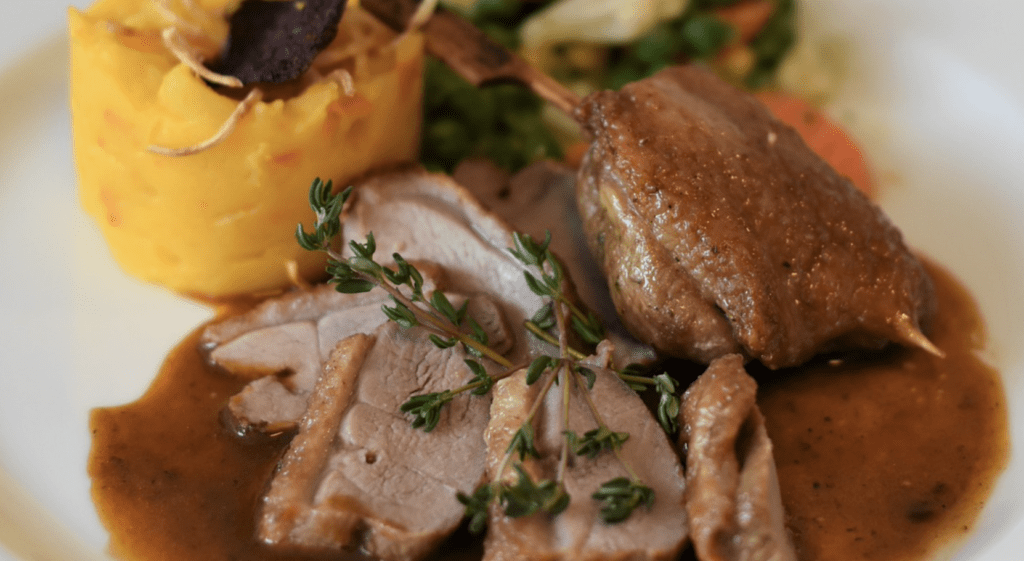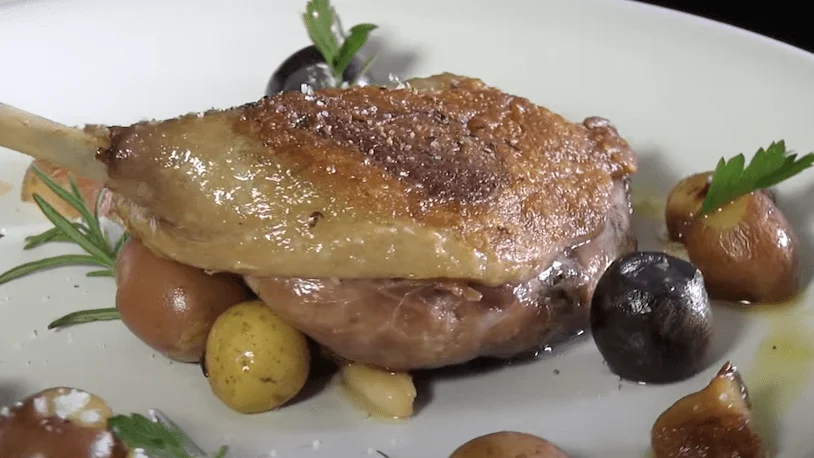Duck confit, France’s finest dish for sure.
Besides the taste and rather unique texture it has so many elements going for it. The preparation, the process and the history behind it.
The French are known for their gastronomical delights bar none so it is not exactly a surprise. But this dish is something else.
On the first day in France I had Duck Confit for dinner in a bistro. Not planned but we could not say no when we saw the restaurant.
This signature dish however does not factor in conversations as much as other cultures’ signature dishes.
My guess is the preparation needed to get it right plus duck is not as popular as other meat , red or white.
Duck Confit is one of those dishes that was too distant, exotic or possibly expensive. So it is not top of mind for many.
Trying other food not on the list
If you have a partner or a circle of friends that are adventurous, you begin a gastronomical journey. A journey not planned but more opportunistic.
In time you cover Smoked Salmon, Porterhouse Steak, Oyster Kilpatrick, Lobster Thermidor, Peking Duck, Lamb Briyani, Cajun Gumboo, Teppanyaki and the list goes on.
When street food became hip, that too became a sought after fare. Yet Duck Confit remained distant. It was either not on the menu or never stood out. Ever heard of a popular duck based street food?

Our trip to France
I can recall the day very clearly.
We walked out of Europe’s busiest train station, Gare du Nord having taken the Eurostar out of St Pancras Station, London early that morning.
As we crossed the street we saw a French bistro. Walked up to it and noticed it’s quaint setting and told ourselves this would be ideal for our dinner venue.
Basically “when in Rome” approach plus convenience. It was also a long day and we wanted something nearby. We then walked to our hotel. We had not even seen the menu.
Here is something that has nothing to do with Duck Confit but more on France.
The word and descriptor “quaint” seems appropriate to describe nearly everything you see in France. Villages, cafes, shops, berets and bicycles etc. Yes, the hotel, its staircase (it did not have a lift) and the room were quaint as well.

History and preparation
Traditional duck confit is a long drawn process passed down over centuries. Originating in the South West of France with the province of Gascony in the midst of it.
The first and original intention of confit is to preserve the meat by curing it with salt, garlic and herbs, usually thyme.
In the old days it took 3 days. Once cured, portions are stored away and only taken out for meals over months.
Cooking duck confit as opposed to preserving it is a separate decision.
When ready to cook the cured meat is placed in an oven, poached in rendered duck fat in low heat for 4 to 7 hours.
The low heat is the key here. Can you imagine the intensity and the infusion of flavours because of the long poach? It is one of the few dishes that takes that amount of preparation and cooking time.
Duck confit recipes in the English speaking World call for much shorter preparation. Mainly thru modern conveniences such as refrigeration but my guess is somethings have to give.
As we approach epiphany
We left for the bistro at about 7pm and it was a short walk. As we turned the corner to the street where the bistro is, the street lighting made it even more quaint!
The place was bathed in a soft yellow glow because of the street lighting. There was one street lamp just outside the bistro which made this bistro to stand out. It was the perfect setting for a cold night.
We sat inside, next to the window. A young and polite French waiter came across to give us the menus. After a read and without hesitation we both picked duck confit.
Both of us had not spoken about this dish since we met decades ago. Picking it was not because we were in France solely. It was little more than that.
When the waiter went away with our orders we did talk about our choice. Apparently both of us wondered about this dish in our youth. It was always at the back of our mind.
We did wonder if it was a good idea to try it in the first French bistro that we saw. Maybe we could have done a little research and picked a place recommended by Tripadvisor.com or some culinary guide.
The dish itself

When it came, the smell was distinct and aromatic.
The skin was firm but the flesh was not. As I placed a sliced-out morsel in my mouth, it was rich in flavour. This is what you will remember for the rest of your life.
The skin was close to crispy but the meat was tender. There was this sense of earthy gaminess. You cannot mistake duck for any other meat even chicken as the texture is also different. It does not come close. I already knew that as I had noticed a similar texture in roast duck in Hong Kong.
The gaminess here is very different from say fresh water fish. The term usually carries a negative or unpleasant connotation. But not in this case.
Anyone who has tasted meat in various cuisines will know that fat and bone make the difference. Take them out and you have something less tasty.
Duck has a higher layer of fat between skin and flesh. So you know why it is so tasty. Imagine cooked in its rendered fat.
By the end of the meal, we both agreed it was wonderful. An unplanned and unexpected surprise.
It had four things going for it – taste, texture, richness and it unique gaminess.
The French I understand will only accept waterfowls such duck and goose as part of confit cuisine. So I learnt.
The ambience
I have to be fair here and mention the ambience while we enjoyed our Duck confit.
It was start of winter and it was cold outside. Inside was toasty warm and the street lamp with its yellow glow sipped thru the large framed windows at night.
Further helped by the small typical bistro setting with tables close by and wonderful French accent in soft tones everywhere.
The waiter was keen to serve. We probably appeared lost compared to his regular diners so empathy was more than a spoonful.
With the setting described above, dining was a delight. I still felt that the Duck confit did taste exceptionally well.
I did try it again, back in Australia and elsewhere but it never came close. In many cases the meat tend to be dry plus the gaminess was not present. My speculative guess is either the type of duck or the preparation were different or both.
More on duck
I will take this opportunity to throw some light on Duck.

The Chinese too have it’s found its culinary value. Note the similarities.
Cantonese Roast Duck from Hong Kong and Peking Duck are two other duck dishes that I rate.
If you notice, all three dishes stand by themselves. And all 3 duck dishes need prior long preparation. In all three, the skin and the flesh are always part of the experience.
Since we are on ducks, there is a recent variation of Peking Duck called Crispy Aromatic Duck which is similar in serving, more affordable and readily on the menu.
In many place Peking duck has to be pre-ordered due to its long preparation. So the easy choice if you had not planned ahead is the aromatic Crispy Duck.

Unlike Duck confit which is the mains, Cantonese Roast duck is typically served with rice or noodles.
It may also be one dish of many in a banquet. Peking Duck is an appetiser and probably the most expensive and luxurious appetiser. Well worth it. Always kept for that special celebration.
If you are not into duck, do make an attempt to try these three with Duck Confit, France’s finest dish as the final piece de resistance.
